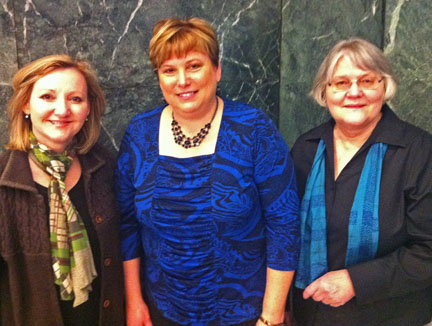Senior lawyers are learning first-hand about the challenges faced by self-represented litigants, by shadowing them in court this morning.

Seven members of the legal profession are pairing up with litigants at two downtown Toronto courthouses. They were invited to take part by the National Self-Represented Litigants Project, headed by University of Windsor law professor Julie MacFarlane.
MacFarlane says it will give the lawyers a taste of the “general feeling of stress and chaos” confronting litigants.
“Even those who are sympathetic to the plight of self-represented litigants don’t have a hands-on experience of what it’s like from their perspective,” she says.
“There really is no substitute for sitting in the court registry and watching the mayhem around you as people are told their documents are wrong and they will have to go up again.”
The lawyers include senior figures at the Law Society of Ontario, Law Foundation of Ontario, Pro Bono Ontario, and the County and District Law Presidents’ Association.
Litigants include a mother fighting for custody of her children and a civil litigant overwhelmed by a matter that had seemed straightforward.
The lawyers will accompany litigants as they fill in forms, consult with duty counsel, and speak in court.
MacFarlane says: “One of the common themes that I want to get out there is that none of these people are saying ‘I can do this better than a lawyer,” but that they can’t afford a lawyer, [or] need assistance in a particular way.”
Offering more unbundled services would help to reduce the number of litigants who take on cases with no legal support, but the bar is “tremendously fearful” of doing so, according to MacFarlane. This tends to be based on the fear of losing control of a file and “wild speculations about malpractice,” she believes.
She adds: “We need to provide a lot more support and resources at the level of bar associations and law societies so people feel they can do this and are supported to do this, rather than feeling discouraged and wary.”
Janet Whitehead, chairwoman of the County and District Law Presidents’ Association, will spend the morning at the courthouse at 393 University Ave. in Toronto.
She says it’s important to understand litigants’ perspective in order to find solutions to what is thought to be a huge rise in the number of self-represented litigants.
It is difficult to gauge exactly what this rise has been nationally, as figures were not uniformly collected until relatively recently.
But self-represented litigants now account for around 40 per cent of litigants in the family courts system, and more than 70 per cent in some lower civil courts, according to MacFarlane’s May 2013 report, “Identifying and Meeting the Needs of Self-Represented Litigants.”
“The whole phenomenon creates a burden on the entire legal system and not only affects self-represented litigants, but the lawyers and judges involved with them, and even clients who have representation,” Whitehead highlights.
Unbundling is one answer, she feels, alongside improved legal aid funding, court system efficiencies, and a better appreciation by litigants of the complexity of the legal system.

 Seven members of the legal profession are pairing up with litigants at two downtown Toronto courthouses. They were invited to take part by the National Self-Represented Litigants Project, headed by University of Windsor law professor Julie MacFarlane.
Seven members of the legal profession are pairing up with litigants at two downtown Toronto courthouses. They were invited to take part by the National Self-Represented Litigants Project, headed by University of Windsor law professor Julie MacFarlane.